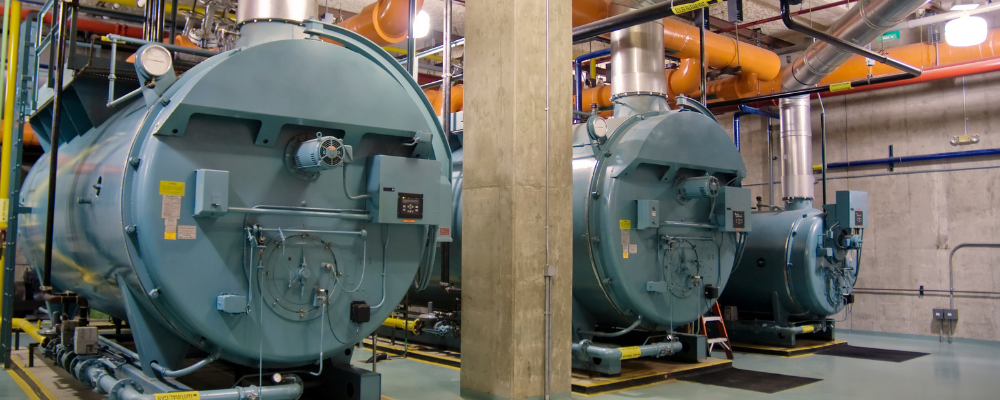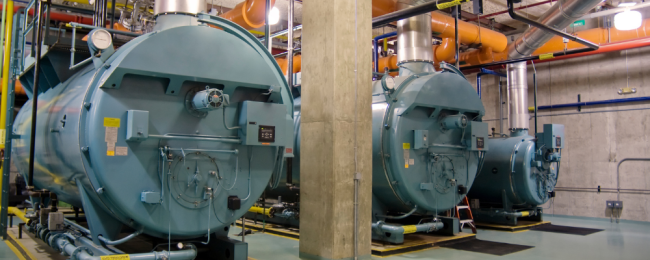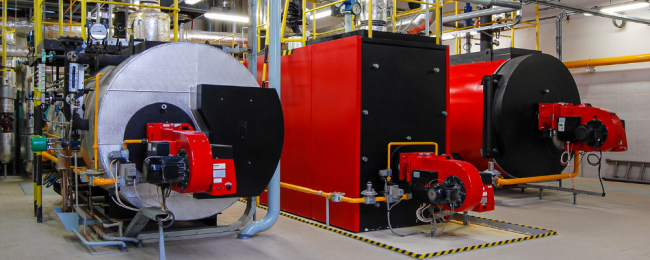
Why Your Furnace Needs a Cooling System

If you’re familiar with vacuum furnaces, you know that they’ve become indispensable for industries seeking precision, cleanliness, and efficiency in material processing. While the spotlight often shines on the furnace itself, the equipment working behind the scenes is equally as important — the furnace cooling system.
Vacuum Furnace Basics
First things first, what’s a vacuum furnace? A vacuum furnace is a specialized piece of equipment designed for heat-treating materials under low atmospheric pressure conditions. This controlled environment eliminates the presence of oxygen and other gases, preventing oxidation and contamination of the materials being processed.
Commonly used in aerospace, automotive, and medical industries, vacuum furnaces play a critical role in producing high-quality components with precise metallurgical properties.
The Role of Heat and the Need for Cooling
Heat is the driving force in any heat treatment process. Vacuum furnaces raise temperatures to extreme levels — up to 1,500 to 5,400 °F — facilitating processes such as annealing, brazing, sintering, and tempering.
However, with great heat comes the need for effective cooling. This is where chillers step onto the stage, playing a major role in maintaining the stability and efficiency of the entire system. Keeping the process water around 100°F helps to make sure the inner walls of the furnace stay below a safe temperature of 300°F. Let’s explore this more in the next section.
Why Your Vacuum Furnace Needs a Cooling System
We now know that furnaces require industrial chillers — but what exactly are the benefits?

Temperature Control
As previously mentioned, vacuum furnaces operate at elevated temperatures, and precise control is 100% necessary. Chillers provide a cooling mechanism to regulate the temperature inside the furnace, ensuring that it remains within the desired range. This control is imperative for achieving consistent and repeatable heat treatment results.
Preventing Overheating
Piggybacking off the last point — overheating can lead to equipment damage, reduced efficiency, and compromised product quality. Furnace cooling systems act as guardians, preventing the furnace and its components from reaching critical temperatures that could result in wear and tear.
Condensation Prevention
Vacuum furnaces often encounter the challenge of water vapor condensation during the cooling phase. Many types of chillers assist in managing this issue by maintaining a stable temperature, minimizing the risk of condensation that could compromise the integrity of the treated materials.
Enhanced Uniformity
Achieving uniform temperature distribution within the chamber is vital for consistent heat treatment outcomes. Furnace cooling systems contribute to this by preventing localized overheating, ensuring that the entire workload is subjected to the desired thermal conditions.
Improved Efficiency
Chiller systems enhance the efficiency of vacuum furnaces by facilitating rapid cooling cycles. This not only expedites the overall heat treatment process but also contributes to energy savings, making the entire operation more cost-effective!
Extended Equipment Lifespan
Undeniably, heat-related stress takes a toll on equipment longevity. Furnace cooling systems mitigate this stress by preventing excessive temperatures, thereby extending the lifespan of furnace components and reducing the frequency of maintenance.
How To Maintain Your Furnace Cooling System
Speaking of your equipment’s lifespan, here’s what you can do to prevent damage to your furnace cooling system.
- Control Dissolved Oxygen Levels: Maintain the required values in the process water to prevent dangerous enrichment with dissolved oxygen. (Excessive levels can lead to corrosion and degradation of system components.)
- Ensure Purity Standards: Regularly monitor and maintain specific purity standards for the process water, preventing contaminants that could compromise the chiller efficiency of your furnace cooling system.
- Optimize Water Temperature: Keep a close eye on water temperature, ensuring it doesn’t rise to levels that could jeopardize the integrity of the furnace cooling system or compromise the efficiency of the heat exchange process.
- Stay On Top of Regular Maintenance: Schedule routine inspections and maintenance checks to ensure all components are in optimal condition.
- Follow Manufacturer Guidelines: Always adhere to the manufacturer’s guidelines and recommendations for operating and maintaining your furnace cooling system.
In the world of thermal processing, the collaboration between vacuum furnaces and industrial cooling solutions creates a balance of precision and efficiency. Investing in a high-quality chiller is not just a suggestion; it’s the best move you can make towards elevating the performance and reliability of your vacuum furnace.
Level Up Your Industrial Cooling with Cold Shot Chillers
Cold Shot Chillers is your partner for cutting-edge solutions that redefine efficiency and precision in heat-intensive applications. Our air-cooled and water-cooled chillers are carefully manufactured to elevate the performance of various industrial processes. Discover the Cold Shot Chillers difference – where advanced technology meets reliability. Ready to take the plunge into a new era of industrial cooling?
Contact us today to explore our furnace cooling systems and solutions.